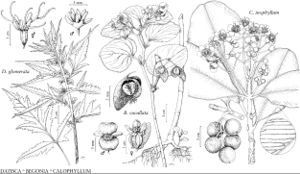FNA>Volume Importer |
FNA>Volume Importer |
||
| Line 33: | Line 33: | ||
|family=Datiscaceae | |family=Datiscaceae | ||
|illustrator=Linny Heagy | |illustrator=Linny Heagy | ||
| + | |illustration copyright=Flora of North America Association | ||
|distribution=sw United States;nw Mexico;sw Asia (Mediterranean region to the Himalayas). | |distribution=sw United States;nw Mexico;sw Asia (Mediterranean region to the Himalayas). | ||
|reference=None | |reference=None | ||
| Line 38: | Line 39: | ||
|publication year= | |publication year= | ||
|special status= | |special status= | ||
| − | |source xml=https://jpend@bitbucket.org/aafc-mbb/fna-data-curation.git/src/ | + | |source xml=https://jpend@bitbucket.org/aafc-mbb/fna-data-curation.git/src/f50eec43f223ca0e34566be0b046453a0960e173/coarse_grained_fna_xml/V6/V6_95.xml |
}}<!-- | }}<!-- | ||
-->[[Category:Treatment]] | -->[[Category:Treatment]] | ||
Revision as of 22:07, 16 December 2019
Herbs or subshrubs, perennial. Leaves alternate, pinnately incised to compound, sometimes simple; stipules absent; petiole present. Inflorescences axillary fascicles. Flowers usually unisexual (mostly bisexual in Datisca glomerata); calyx unequally 4–9-lobed; petals 0; staminate flowers: stamens [6–]8–12[–25]; filaments distinct, very short; pistillate flowers: calyx tube adnate to ovary; ovary inferior, 3–8-carpellate; placentation parietal; ovules 24–64; styles 3, threadlike, deeply forked at apex [subulate or longer with capitate-peltate or clavellate stigmas]; bisexual flowers often with staminodes. Fruits capsular, opening apically between styles. Seeds 100–300; embryo straight; endosperm little or none.
Distribution
sw United States, nw Mexico, sw Asia (Mediterranean region to the Himalayas).
Discussion
Genus 1, species 2 (1 in the flora).
Selected References
None.
